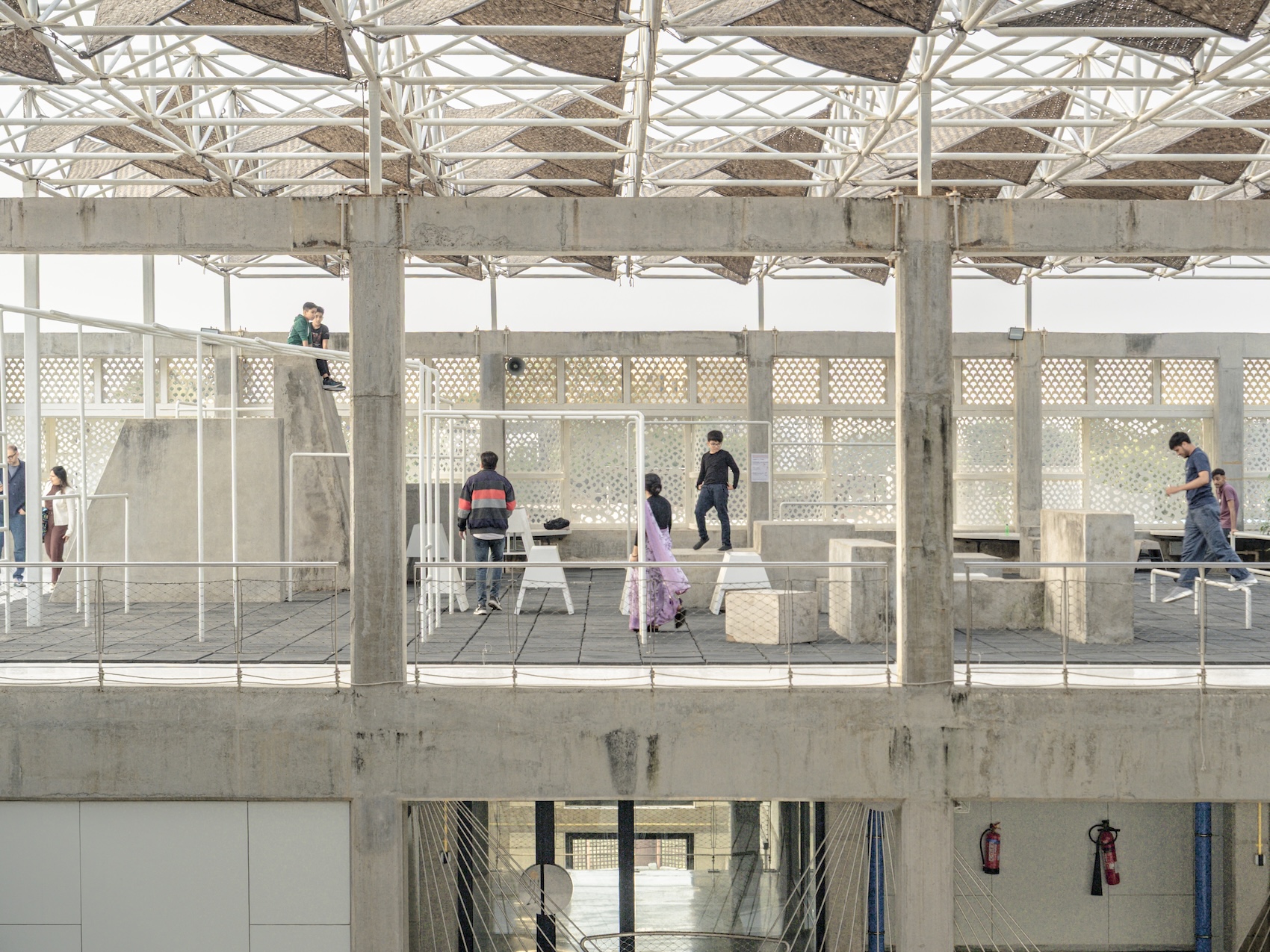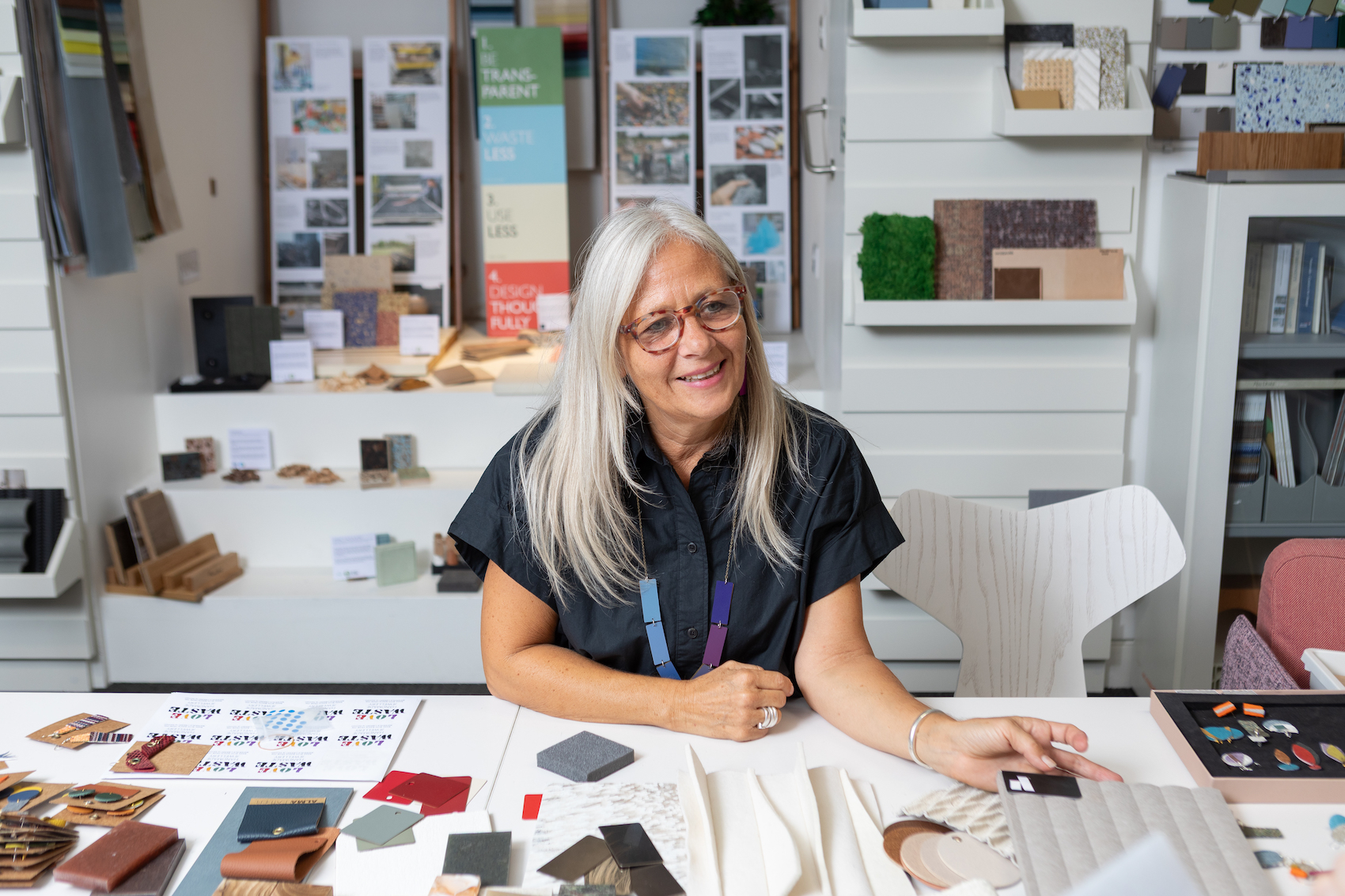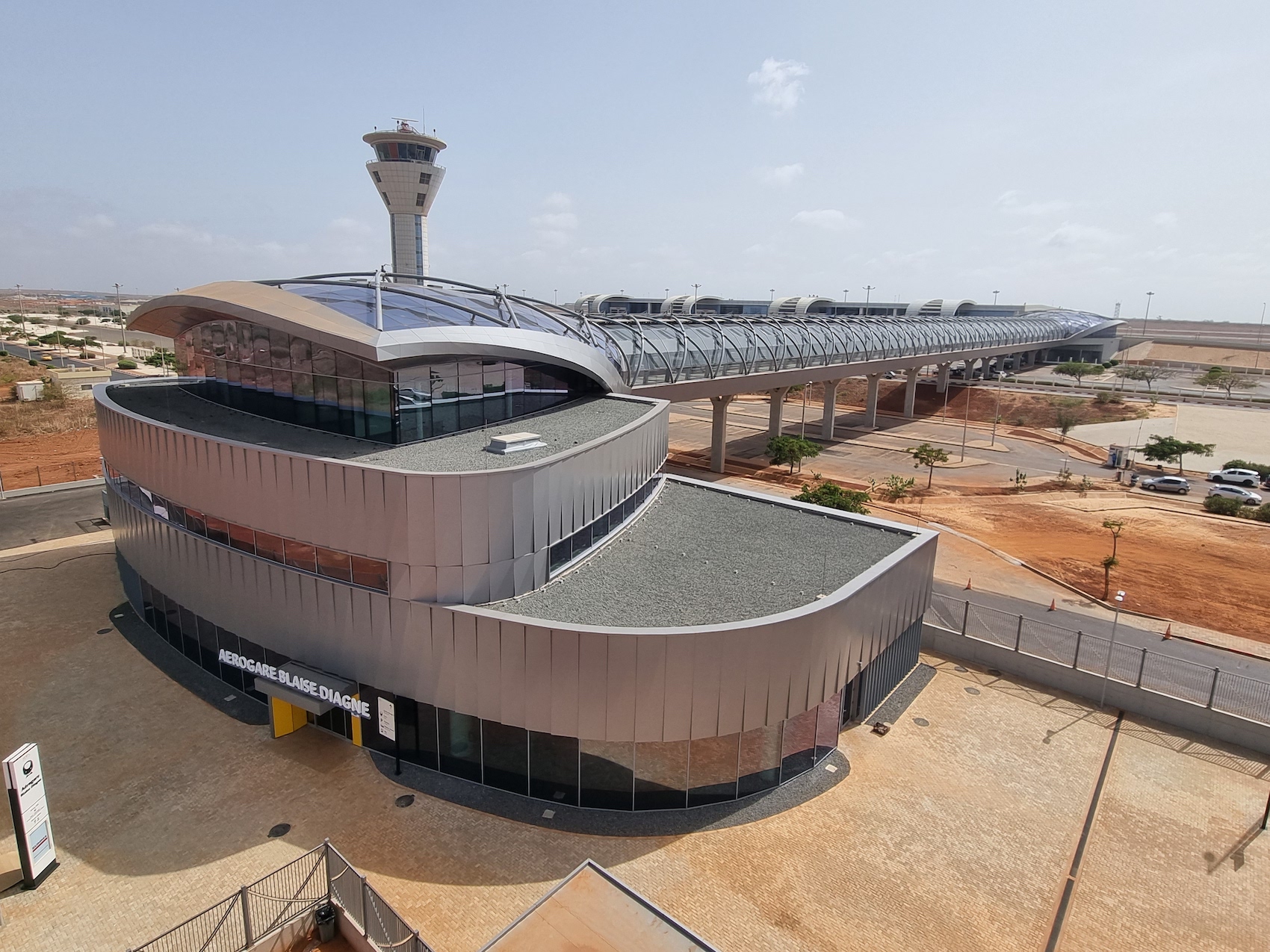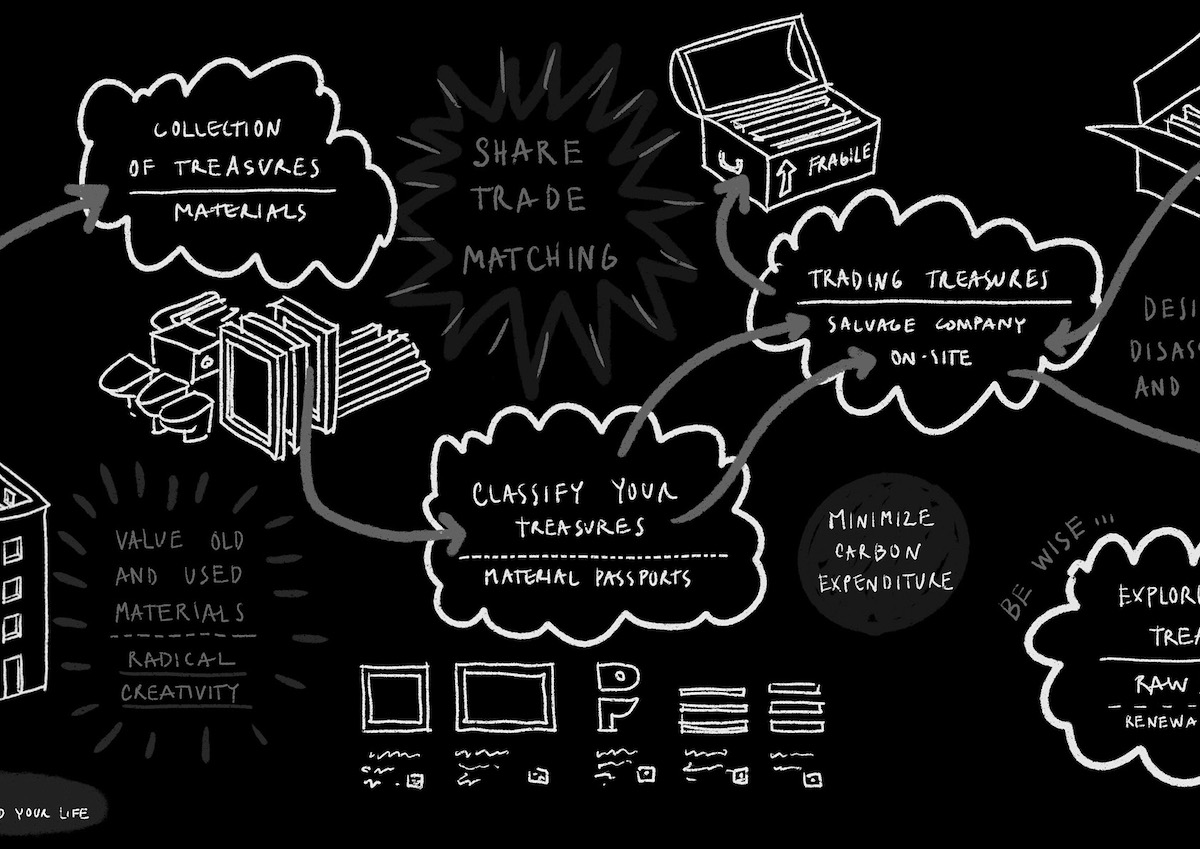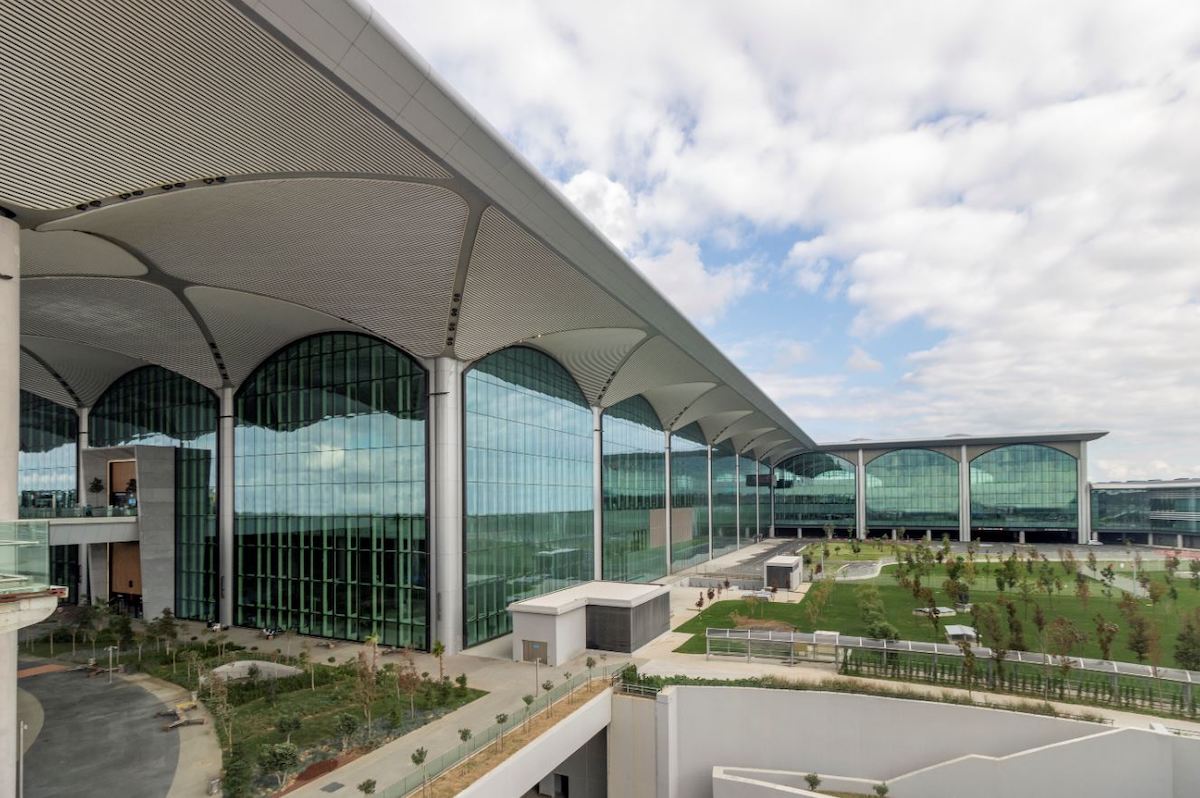Ingrid Petit and Ben Higham of Feilden Fowles discuss how the practice’s approach to materiality is driven by context, craft, sustainability and technical innovation.
Feilden Fowles is an award-winning practice with an enviable reputation for delivering exemplary social and environmental projects, often in sensitive and challenging historic settings. Founded in 2009 by Fergus Feilden and Edmund Fowles, the 20-strong team occupies a purpose-built studio – one of three simple yet elegant timber structures designed by the architect – that forms part of Waterloo City Farm in south London.
The practice takes both an academic and hands-on approach, engaging in extensive contextual research while also exploring materiality and craft through large-scale prototypes and models. Material expression and richness underpins all of its work, with priority given to natural products that age gracefully and weather beautifully over time.
Traditional materials tend to be favoured over modern ones but are frequently expressed in new and contemporary ways using highly refined and rigorous detailing. Good examples include the concave, CNC-cut, arched sandstone bays of the Fratry at Carlisle Cathedral (AT 309); the expressive glulam frame employed at the Ralph Allen School Dining Hall (AT 318);and the tapering faience façade fins of the recently completed Dining Hall at Homerton College, Cambridge.
So how does the practice balance its preference for traditional materials and crafting with emerging construction technologies and the need to meet strict environmental and social agendas? What informs its product choices? And how does it work with craftspeople and manufacturers to bring its projects to life? Senior architect Ben Higham and Associate Ingrid Petit explain.
The extensive materials library runs the entire length ofthe timber-framed studio. It is organised according to material type with products and samples stored in boxes on the lower levels.
How does the material library work within the practice and who is responsible for its upkeep?
Ben Higham Everyone in the practice gets involved with the library, but it is our colleague architect Martha Rawlinson who is in overall charge. The library runs the entire length of the studio and is organised by material type with samples and products stored in boxes. As building designs develop, certain materials are co-opted into project-specific boxes, which form part of larger display/review areas that also include drawings and models. There’s a lot of sharing and the occasional case of stealing from other projects!
Ingrid Petit We find that over the life of a project the bank of samples in the display area will gradually narrow down through a process of elimination. For example, on the Central Hall scheme for the National Railway Museum in York, we are currently making final decisions on the copper and acoustic finishes among other materials. So hopefully by the time we get to the end of the tender process we will have just five key samples.
Ben Higham The samples tend to migrate to site during the construction phase, becoming important reference items for the contractor. This is particularly true of projects that employ bespoke materials, such as Homerton Dining Hall. Here, the final hand-crafted and client-approved faience samples from Darwen were delivered directly to site so they could be used to benchmark the façade installation.
Do some materials live in the library permanently?
Ingrid Petit To be honest we are very bad at clearing out the library! It’s also a question of waste. Some materials may not be right for our current projects, but they might be useful in the future. Ultimately, we need to manage the library better to ensure that we don’t order samples that we already have.
Ben Higham Some manufacturers will pickup samples after we’ve finished with them, but unfortunately there are not many that offer this service. Sometimes, material samples get turned into models…
Ingrid Petit…Or Secret Santa gifts! It’s an ongoing problem. We managed to have a big clear out/review during lockdown, but you really need everyone around to avoid throwing out ‘live’ samples or ‘core’ ones which will likely be needed again.
Faience panels from Darwen. “Manufactured by Darwen for the Homerton Dining Hall façade, these bespoke faience panels are handmade, with the glaze literally dripped down the outer face prior to firing. The glaze itself contains a variety of pigments and metals, which react with each other to produce a rich mottled effect that changes depending on the light. Hung off the concrete substructure, the self-supporting, profiled panels gradually narrow towards the top of the building.”
At what point in the project do materials become a focus?
Ben Higham At the outset.
Ingrid Petit Yes, the structural type and external cladding materials are considered from the very beginning.
Ben Higham It’s a bit of a generalisation, but it’s probably true to say that the more detailed and interesting the site context is, the earlier we start to consider the materials. In the case of projects that are more isolated or don’t have particularly rich contexts, then material selection may start slightly later or react to other design drivers.
Ingrid Petit Project complexity can also have an important bearing on material selection. The masonry façade of the Fratry at Carlisle Cathedral was actually decided relatively late in the design process, because the early stages focussed predominantly on massing and how best to extend the historic structure. It was only when these aspects began to gel that we started to explore precast concrete and then stone for the building envelope.
Triangular bronze window mullion from Victoria John of London. “These bespoke window mullions were designed for the glass link building at Carlisle Cathedral; the aim being to maximise views out while maintaining an elegant, lightweight structure. The mullions form part of a larger, exposed bronze diagrid that supports the link roof.”
How important is sustainability when it comes to material selection?
Ben Higham The practice has always been environmentally aware, but this has come to the forefront in recent years. Sustainability consultants are proving to be a great resource on larger projects with regards to carbon calculations. It allows us to quickly understand where our ideal material sits in relation to the overall environmental performance of the project, and if we need to work harder to reduce its embodied carbon content.
But it’s not just embodied carbon that’s important; we also want to know how long a material will last. We then have to decide how willing we are to counter a higher carbon figure with a material or product that might last twice as long as a lower carbon alternative. Faience, for example, has relatively high embodied carbon, but should last three, four, or even five times longer than timber cladding. It’s a conversation that we have on every project.
Ingrid Petit We also look at materials in terms of buildability and economy of structure. It’s about combining architectural expression with maximum efficiency.
Ben Higham We recently completed a circular economy-inspired, 3000-square-metre, CAT B office fit-out in London. The project includes lots of bespoke, stand-alone joinery elements, as well reusable flooring and wall elements – all of which can all be demounted and redeployed if and when our environmentally-aware client moves location.
Embodied carbon and whole life-cycle assessments are now part of all London- based planning submissions. We recently submitted designs for a college in south London, only to find out that the highest area of embodied carbon in the project was the metal studwork! We were asked to change this to timber, which of course we did; but it’s quite interesting to note how something that might be regarded as fairly trivial can have a big impact on the overall sustainability.
Dumfries red sandstone from Marshalls Stancliffe Stones. “Used to form the elevations of The Fratry at Carlisle Cathedral, we chose this stone for its warm colour and distinctive horizontal veins set within the bedding plane. We detailed the stone arches above the windows so that the veins produce a radial effect that augments the façade geometry. The stone was cut by Cumbrian Stone in Penrith and installed by Askins and Little.””
So are there any materials you wouldn’t use from an environmental perspective?
Ben Higham There’s been environmental advances with many materials, so the concrete, for example, that was specified on Homerton Dining Hall incorporates the highest possible levels of GGBS (ground granulated blast-furnace slag). Steel continues to ring alarm bells with the practice, so we tend to use it sparingly wherever possible. Ingrid Petit Going back to the idea of the circular economy, we purposefully avoided the use of wet trades, such as plastering, in the design of the practice studio. This will make it easier to dismantle and relocate the building when our lease eventually expires.
What materials excite the practice and why?
Ben Higham and Ingrid Petit unanimously Timber!
Ben Higham It tends to be our go-to material for reasons of embodied carbon, design and constructional articulation, as well as visual appeal. It can also eschew the need for additional finishes, such as dry lining and suspended ceilings, making it even more sustainable. You might have to work a little harder to rationalise and coordinate a timber design, but ultimately it’s a piece of primary structure that creates interest and tells a story of how the building is put together.
Ingrid Petit Timber is tremendously diverse. For example, on the Waterloo City Farm site we’ve used Douglas fir for all three structures, but the structural joints and finishes are all expressed differently. The former range from simple bolted connections to double-flitched and dowelled joints, while the latter include green, planed and white washed finishes. Timber buildings always present a challenge; there are so many different ways of articulating them.
Ben Higham The material can also inform the design process from the outset. For our studio, we began by sourcing the biggest section of Douglas fir commercially available in the UK, and then based the building’s maximum structural span on it. On the other hand, timber design can be highly technical, especially with regards to solid timber structures. You need to make sure that your specification is correct and viable. It’s quite easy to specify something that is just impossible for someone to produce.
Ingrid Petit We’ve started using Sierolam, which is a laminated engineered timber made from hardwoods rather than softwoods. It has a nicer finish and is stronger than traditional glulam so the section sizes can be smaller. It is also laminated in one plane rather than two planes.
Wood fibre boards from Celenit. “Made from mineralised woodwool, these cost-effective, low-embodied carbon boards provide good levels of thermal and acoustic performance. They are also tough and hard-wearing, making them suitable for a wide range of applications, including schools and public buildings.”
What about CLT?
Ben Higham We’ve used this in the past and found that early engagement with the specialist subcontractor is crucial, especially with regards to structural design, lead in times and procurement. At the moment, CLT structures are significantly cheaper to produce than steel ones, which is obviously advantageous for client organisations, in addition to the environmental benefits.
What other materials is the practice interested in alongside timber?
Ingrid Petit Our material selection is fairly diverse and driven mainly by the project context. We used layered pigmented concrete on the Weston at Yorkshire Sculpture Park to evoke the strata of the site’s sandstone bedrock. The Fratry at Carlisle Cathedral employs stone due to its historic context, while the faience cladding on Homerton Dining Hall makes reference to the lead and green oxidised copper flèche of the Great Hall.
Ben Higham There tends to be a progression of material themes between projects. The learnings from the stonework used on The Fratry fed into the masonry elements of the Urban Nature Project at the Natural History Museum in London. Similarly, the knowledge gained from used board-marked concrete ceilings in the gallery spaces at the Yorkshire Sculpture Park led to the pigmented, board-marked concrete used on Homerton Dining Hall. So there are overlaps and a development of thinking and process that occurs.
Ingrid Petit One material that has been appearing more and more recently is wood-fibre board. Good acoustic finishes are always really difficult to find, although people tend to love or hate this type of product. They are great for a number of reasons, including low embodied carbon, acoustic performance and value for money.
Ben Higham On the Ralph Allen School Dining Hall, the wood-fibre boards are located on the ceiling between the glulam beams. The setting out for the ceiling structure is actually based around the width of the boards – a decision that was taken early on in the design process. We used the same material for suspended ceilings on anew classroom block at the school.
Ingrid Petit Another highly sustainable material that we have been experimenting with is hemp. We’ve used corrugated hemp-fibre cladding panels manufactured by Margent Farm on an office fit-out project, and the practice has also tried to specify the panel externally a couple of times. But it’s quite early in the product’s development, particularly with regards to certification and questions over longevity when exposed to the elements.
Corrugated hemp panel from Margent Farm. “This is a highly sustainable material that we recently specified for an office fit-out in London. Bound with a sugar resin made from agricultural waste, it has a high cellulose content (60-70 percent) making it both strong and durable. Like untreated timber, the colour will lighten over time when exposed to UV light. We think it looks great and are trying to include it on a number of current projects.
Are there any materials that you would like to use but haven’t been able to yet?
Ingrid Petit Metal cladding has eluded us so far, although the Central Hall for the National Railway Museum in York will feature large recycled copper panels. We are currently evaluating both weathered and unweathered samples from Aurubis.
The practice hasn’t designed a big brick building yet, due in part to issues surrounding embodied energy. However, we’ve being talking to Kenoteq, a Scottish start-up that produces the K-Briq, an unfired brick made of 90 per cent construction waste. The brick can also be pigmented with a wide range of colours and has a speckled, non-uniform appearance, which adds to its visual appeal. The main problem is certification, for example, the brick can be used 150mm above ground, but not below it– at the moment. We are currently discussing this issue with the company, as we would like to use the product on our National Railway Museum project.
Another product that we are excited about is Porotherm, an engineered clay block walling system from Wienerberger. On the continent, it is often used in a monolithic format, measuring up to 700mmdeep with no insulation required. We’re designing a student accommodation scheme for Great Templeton College in Oxford using the system. The proposed walls are two blocks deep, with one of the skins being of higher density for structural reasons, and the other less dense ensuring excellent thermal mass and insulation.
Overall, the depth of the walls will be around 650mm with a lime render finish applied both internally and externally. The simplicity of the system ensures durability and longevity, as – unlike conventional cavity walls – there are far fewer components that can potentially fail. Our client wanted a minimum building lifespan of 100 years plus, so this material fits the bill perfectly.
K-Briq unfired bricks from Kenoteq.“These highly sustainable unfired bricks are mainly made from construction waste. We are currently evaluating them for use on our National Railway Museum project in York. The bricks are relatively new to the market and were showcased at COP26 last year. They are said to provide significant energy and CO2 emissions savings compared to traditional fired clay products.
What is your approach to working with manufacturers and craftspeople when developing specific materials and construction techniques?
Ingrid Petit We try to engage with the manufacturer as early as possible on every project that incorporates a key material. For Homerton Dining Hall, we started working with faience specialist Darwen from the competition stage onwards.
Ben Higham The in-depth material knowledge that specialist craftspeople and fabricators have inevitably changes the way we design certain items. They can also tell you what can be expected from certain materials in terms of performance and aesthetics. On Homerton Dining Hall, for example, we initially designed slender brass handrail stanchions welded to brass baseplates. But the fabricator informed us that the brass was too thick and would warp upon welding. As a result, we reworked the detail to eliminate this problem.
Ingrid Petit Close collaboration between architects and craftspeople can be very rewarding for both parties. The stonemason on The Fratry was initially sceptical that our design could work. But after discussing the project in detail and showing him our research, he came onboard. As the design developed, he flagged up key issues relating to weathering, specific drip details, and soon. Ultimately, this led to the construction of a full-scale prototype on site, which exceeded the expectations of both the practice and specialist subcontractor. It’s like a healthy challenge for both parties, which pushes the design forward and results in a better end product.
Ben Higham It can be hard, especially on larger projects, to get suppliers to commit to helping you. There’s a lot of good faith involved, and personally I feel quite bad asking for input sometimes when there is no guarantee that the company involved will win the work.
Ingrid Petit In some instances, design work on key elements has been well advanced prior to tender, only for another specialist to be appointed. Inevitably ,this means restarting those conversations and detail developments with another manufacturer, which can be frustrating and time consuming.
Ben Higham In light of this, we often push for traditional, two-stage procurement routes. But unfortunately we very rarely succeed. Bearing in mind the practice’s interest in craft and making, do you organise many factory visits?
Ingrid Petit Not often enough! They tend to be project-specific, rather than involving the whole practice. So for example, Darwen for Homerton Dining Hall, and Locharbriggs Quarry in Dumfries for The Fratry.
Ben Higham The last office-based factory tour was to West Leigh, a Bermondsey-based steel window and door manufacturer. But it’s been especially difficult of late due to the pandemic.
















